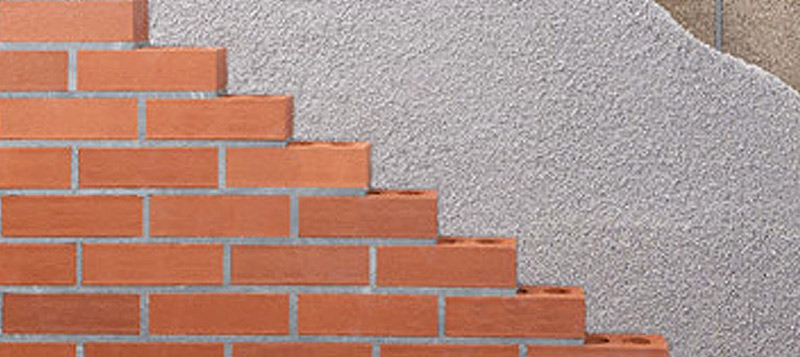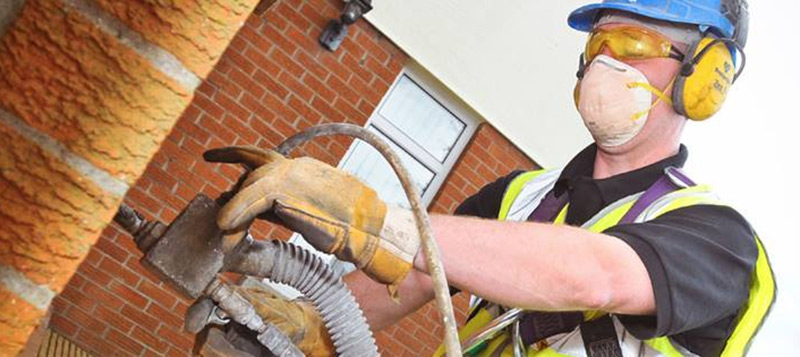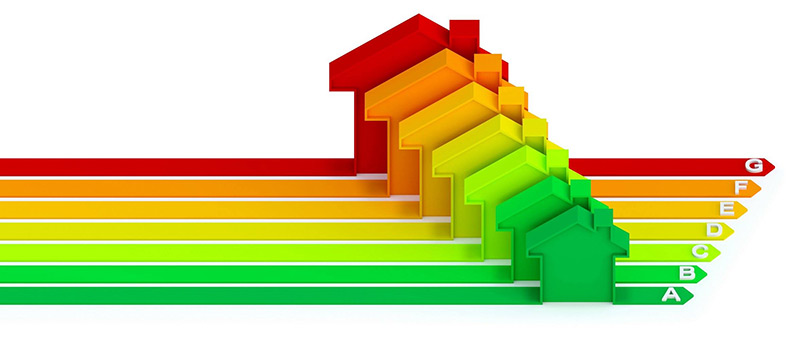Telephone
Click to view
Mobile
Click to view
Website
Contact
John McCullough
Address
3 Fairway Gardens
Belfast
County Antrim
BT9 5NP
Northern Ireland
About Certainfil Cavity Insultion Limited
Certainfil Cavity Insulation Limited is a second generation family business specialising in installation of Bonded Bead Cavity Wall and Fibreglass quilting loft insulation. As BBA certified installers our cavity wall installations come with a 25 year CIGA guarantee and our loft installations are completed to Building Control requirements.
An un-insulated home can lose 35% of its heat through walls and 25% through the loft. You can save up to 40% on your fuel bills and it benefits the environment as well as your pocket. Properly insulating your home can dramatically reduce heating bills and increase warmth. The risk of black mould growth developing within the house is also reduced.
Cavity Wall Insulation
Certainfil Cavity Insulation Limited uses a high grade silver graphite expanded polystyrene bonded bead (EPS) system of installation. Silver graphite bead is typically 20% more effective at reducing heat loss than the older “white” bead that may also be offered by other installers.
Beads arrive at your home already manufactured to the density required by the Agrément Board and they are simply blown into the wall from the truck and sprayed with an adhesive so that they form a bonded mass. Because installation of cavity wall insulation is done externally there is no need for anyone to be at home during the installation which is usually completed in one day.
Bonded beads have a consistent density and cannot shrink or settle. That's why you can sit on a beanbag without compacting the contents. One could not imagine a void or space within the beanbag and in the same way such voids cannot occur in a bead filled cavity. Our specific drilling pattern outlined by a British Board of Agrément (BBA) guarantees that your cavity will be 100% filled with beads. Polystyrene bead is also a non absorbent material so will not soak water which is why it has been used for many years in the fast food industry to serve hot drinks.
Loft Insulation
Current building control regulations require approximately 300 mm (12 inches) of insulation to be installed to roofspace areas. Most properties will have some insulation installed to their roofspace (often 100 mm) and therefore homeowners often think they are adequately insulated.
The regulations were amended as part of the overall plan to meet the EU CO2 emissions targets for Northern Ireland and the UK by addressing the poor thermal efficiency of homes, to reduce heat loss and therefore improve energy efficiency and reduce waste. The additional benefit to the homeowner is reduced fuel bills and a warmer home.
Partial Fill Cavity Wall Insulation
Some builders started to built in a solid board around 1985 onwards This board was approx 30mm and fitted against the inner leaf of the cavity, at this time cavities increased from 75mm to 100mm. In these cases this left a 70mm space of the cavity with no insulation.
Many houses built between 1985 until 2008 have a 30, 40 or 50mm board fitted in a 100mm cavity. If these house were built to today’s building standards they would have double or even triple the amount of insulation in the wall.
With certainfil cavity insulation it is possible to double or even triple the amount of insulation in the wall by installing additional insulation into the cavity. Making a marked improvement to the heating of the house and reducing fuel bills. In the insulation industry we refer to this process as PARTIAL FILL CAVITY INSULATION.
Insulation Extraction
Using specialist tools and machinery, Certainfil Insulation can remove defective cavity wall insulation, causing little disturbance to the building or the inhabitants of the home. Certainfil Insulation can undetake the extraction of Rockwool, White wool, foam and bead insulation products from the cavity walls of domestic houses or apartments.
An un-insulated home can lose 35% of its heat through walls and 25% through the loft. You can save up to 40% on your fuel bills and it benefits the environment as well as your pocket. Properly insulating your home can dramatically reduce heating bills and increase warmth. The risk of black mould growth developing within the house is also reduced.
Cavity Wall Insulation
Certainfil Cavity Insulation Limited uses a high grade silver graphite expanded polystyrene bonded bead (EPS) system of installation. Silver graphite bead is typically 20% more effective at reducing heat loss than the older “white” bead that may also be offered by other installers.
Beads arrive at your home already manufactured to the density required by the Agrément Board and they are simply blown into the wall from the truck and sprayed with an adhesive so that they form a bonded mass. Because installation of cavity wall insulation is done externally there is no need for anyone to be at home during the installation which is usually completed in one day.
Bonded beads have a consistent density and cannot shrink or settle. That's why you can sit on a beanbag without compacting the contents. One could not imagine a void or space within the beanbag and in the same way such voids cannot occur in a bead filled cavity. Our specific drilling pattern outlined by a British Board of Agrément (BBA) guarantees that your cavity will be 100% filled with beads. Polystyrene bead is also a non absorbent material so will not soak water which is why it has been used for many years in the fast food industry to serve hot drinks.
Loft Insulation
Current building control regulations require approximately 300 mm (12 inches) of insulation to be installed to roofspace areas. Most properties will have some insulation installed to their roofspace (often 100 mm) and therefore homeowners often think they are adequately insulated.
The regulations were amended as part of the overall plan to meet the EU CO2 emissions targets for Northern Ireland and the UK by addressing the poor thermal efficiency of homes, to reduce heat loss and therefore improve energy efficiency and reduce waste. The additional benefit to the homeowner is reduced fuel bills and a warmer home.
Partial Fill Cavity Wall Insulation
Some builders started to built in a solid board around 1985 onwards This board was approx 30mm and fitted against the inner leaf of the cavity, at this time cavities increased from 75mm to 100mm. In these cases this left a 70mm space of the cavity with no insulation.
Many houses built between 1985 until 2008 have a 30, 40 or 50mm board fitted in a 100mm cavity. If these house were built to today’s building standards they would have double or even triple the amount of insulation in the wall.
With certainfil cavity insulation it is possible to double or even triple the amount of insulation in the wall by installing additional insulation into the cavity. Making a marked improvement to the heating of the house and reducing fuel bills. In the insulation industry we refer to this process as PARTIAL FILL CAVITY INSULATION.
Insulation Extraction
Using specialist tools and machinery, Certainfil Insulation can remove defective cavity wall insulation, causing little disturbance to the building or the inhabitants of the home. Certainfil Insulation can undetake the extraction of Rockwool, White wool, foam and bead insulation products from the cavity walls of domestic houses or apartments.
 Ireland
Ireland UK
UK Scotland
Scotland London
London

















